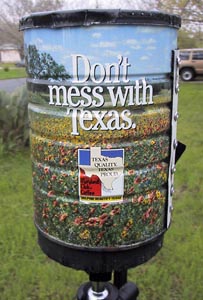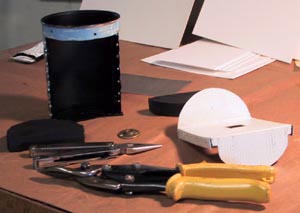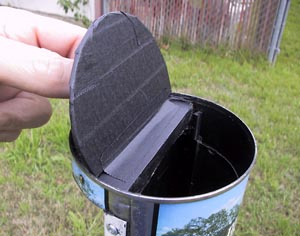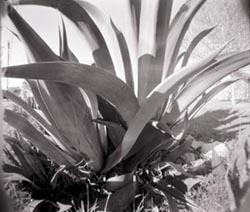 |
|||
|
|
|
How to Make a Coffee Can Pinhole Camera |
|
The first thing you will note about Kurt’s camera is its curved film plane--this cuts down on distortion and provides the same “focal length” throughout the horizontal plane of the image. I definitely wanted the curved film plane, but I didn’t think I could fabricate a mechanism that would handle roll film--frankly, I’m more of a mechanic than a craftsman--so I decided I would go with sheet film. I began looking for something curved, and under the sink I found an old coffee can. It looked about
right. When I tore the paper off the can, I discovered a scene of wildflowers and a “Don’t mess with Texas” anti-litter advertisement. Perfect! I got my Dremel tool and cut the Then I needed something to hold the film. I thought about this for the better part of a day before I remembered that I had some old leaky 4x5 film holders up in the attic. I dug
one out and disassembled it. Inside were two aluminum rails and two formed aluminum sheets that back the film. I decided I could use the rails and bend one of Initially, I had intended to use roof flashing tin (actually steel) to make the front of the camera, but when I went to borrow my father’s tin snips, he offered
me some aluminum that is also used for roof flashing. With my coping saw I cut two semi-circular pieces of wood, one to go in the top to give it some rigidity (and help with the light-tight seal), and the other to go on the bottom so I could attach a tripod mount. The bottom piece was essential if I wanted to be able to use the camera with a tripod. I painted both these pieces of wood flat black and attached them to the coffee can with small brass wood screws.
Using a piece of a mat-board cut-out, I made a semi-circular flap to seal the top, covered it with black photographic tape, and taped
it to the piece of wood in the top of the can (I had set the piece of wood about 1/8 inch down from the top rim of the can so I would have room for this flap). Then I covered the plastic lid Years ago I had made four or five different pinholes to use with my 8x10 camera. (See How to Make a Pinhole.) These pinholes were made using the “dimple” method, whereby one makes a dimple in a sheet of brass shim stock, pokes a hole in it, then hones down the edges. Such pinholes can be remarkably sharp if they are made carefully, but I was worried that the dimple (even a very shallow one) might prevent light from getting to the far corners of my curved film plane. This proved to be a valid concern when I mounted a .231mm pinhole and made my first
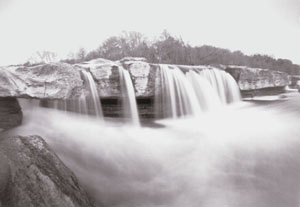 Since my coffee can pinhole camera has a pinhole to film plane distance of
54mm, the 200 micron pinhole gives it an effective aperture of f/270. (I have since noticed that the longer the exposure the better the coverage, even with my homemade pinhole.) Since my coffee can pinhole camera has a pinhole to film plane distance of
54mm, the 200 micron pinhole gives it an effective aperture of f/270. (I have since noticed that the longer the exposure the better the coverage, even with my homemade pinhole.)
You can buy a whole set of precision drilled pinholes from the Pinhole Resource. They also carry an array of ready -made pinhole cameras and offer a great deal of information about pinhole photography. The Unblinking Eye Eclectic Links page has links to several other interesting and informative pinhole sites.
|
|
|
|
|
